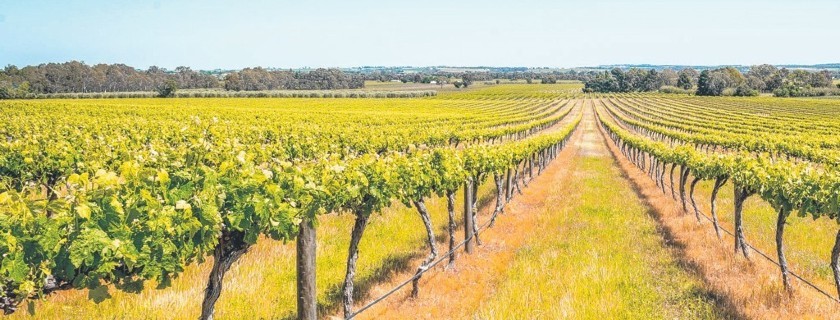Technology that matches terroir
A virtual marketplace is just one of the innovations underway.

The history of Australian wine is sketched in booms and busts, days of plenty and days of dry despair.
Yet, even by the turbulent standards of the past, the current climate presents never-before encountered challenges that demand creative responses.
That’s especially so for South Australia’s winemakers, whose 18 distinct regions produce more than half of Australia’s wine and whose product accounted for 70 per cent of Australian wine exports by value in 2020.
So, when a pandemic hits, and turbulent trade relations with a major international market emerge, the need to innovate is greater than ever before.
Australia’s winemakers have long been celebrated for their willingness to roam the world in the cause of opening markets and spreading the word on Australian wine, but with that route now an impossibility for the short to medium term, the wine industry is deploying technology, and accessing targeted government funding to showcase their wares around the world.
Like every other industry, winemakers are being forced to build their digital capability in order to access new markets, both domestically and abroad, showcasing their wines in small format bottles and vineyards through Zoom, Teams, Skype and social media platforms.
National industry body, Wine Australia, has developed a virtual marketplace called Australian Wine CONNECT to replace the promotional, educational and commercial activity that would normally take place at global trade fairs and through market visitation, while grants of up to $100,000 are available through the South Australian governments eCAP Grant to help wineries develop their e-commerce capability. Meanwhile, the South Australian Department for Trade and Investment is using its network of international offices to connect local wineries directly with overseas buyers, with fruitful results. A recent virtual tasting earlier this month saw eight local wineries each showcase their wines to 14 Polish buyers – with almost immediate results.
Many wineries are tapping into a raft of other support measures provided by the South Australian government, such as the recently announced Wine Export Recovery and Expansion program. This allows South Australia’s winemakers to benefit from a $5.4 million investment over the next four years. The investment will increase commercial opportunities for those winemakers already exporting, and open pathways for winemakers needing to expand into global markets.
While international borders remain closed, the easing of internal border controls and a huge demand from domestic visitors desperate to get out and explore their own backyards has rapidly accelerated the evolution of the most traditional way winemakers showcase their wares – the cellar door.
There was a time when wine region tourism was more about pragmatism than pleasure, where cellar doors were simple spaces, sometimes simply a lean-to against a winery shed, and the whole experience was little more than a run through the current release wines while someone behind the counter suggested what gems you might find in the glass.
But times have changed, tastes have evolved, and expectations have expanded. Today’s cellar door visitor wants more than just a taste. They want an experience.
The Covid-19 pandemic has, strangely, been a useful catalyst for creativity in many cellar doors.
Requirements for pre-booking, social distancing demanding seated, rather than standing tastings, and more interaction with smaller groups have all helped to reshape the concept of the cellar door visit.
It’s something the vignerons of South Australia have learned quickly.
No gateway city in the world offers the vinous diversity Adelaide does, with half a dozen distinctly different wine regions all within 90 minutes of the hire car desk at the airport.
Right across South Australia, winemakers have been developing bespoke experiences that give visitors far more scope to explore and enjoy the wines on offer than ever before.
Guided tours of prized vineyards, exclusive tastings tailored to any budget, greater effort to put the wines into gastronomic context, even the opportunity to get down and dirty in the vineyard and descend into pits dug out to explore the geological layers that shape the wines, are all part of the evolution of the winery visit from simple tasting to immersive experience.
Wine has always been an industry with a strong grip on its traditions coupled with a willingness to anticipate the future.
There has never been a better time for the industry to embrace the challenges and opportunities of a new, digitally connected global marketplace.
Story by Nick Ryan.
Sourced from: ‘The Deal: Reinventing Business’, The Australian, June 2021, p.6.